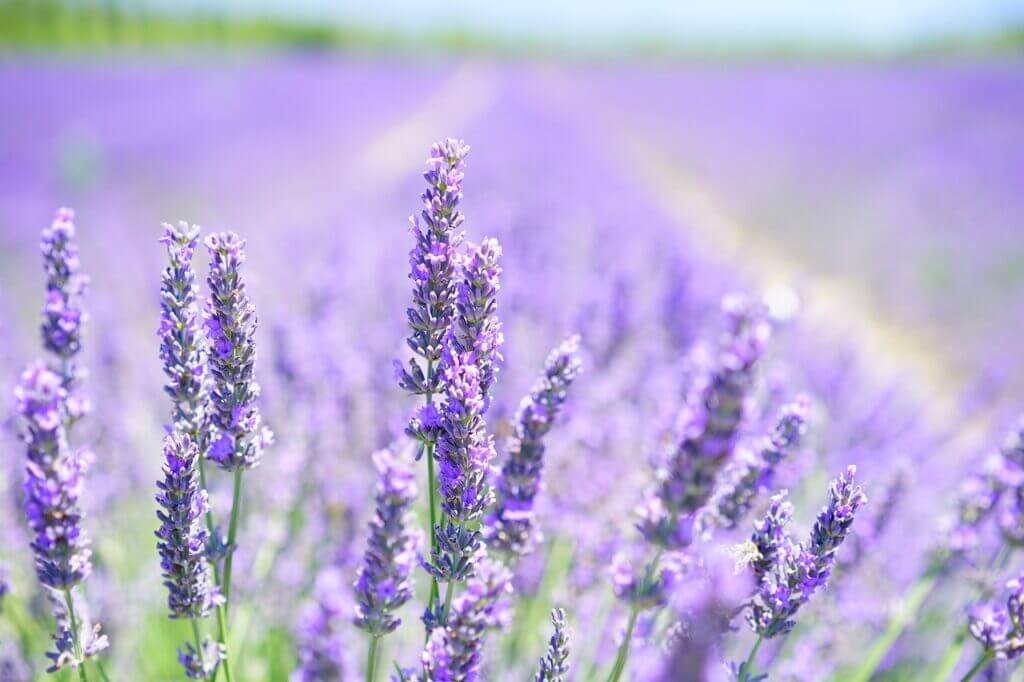If you’re lucky enough to have a garden in the midst of the bustling city, then you’re already going to want to make the most of it. And what better way to do that than by growing your own herbs? Not only do they add flavor and freshness to your meals, but they also bring a touch of nature to your urban oasis. But with so many herbs to choose from, how do you know which ones are best suited for your city garden? In this article, we’ll explore some of the top herbs that thrive in an urban environment, helping you create a vibrant and aromatic green space right at home.

Basil
Basil is one of the best herbs to grow in a city garden because of its versatility and the wide range of varieties available. Whether you’re a fan of traditional sweet basil or prefer the spicy flavor of Thai basil, there is a basil variety to suit every taste. Basil is relatively easy to grow, making it a perfect choice for beginners. It thrives in warm weather and requires full sun for at least six hours a day. Make sure to provide well-draining soil and water consistently. Harvesting basil leaves when they are young and tender will result in the best flavor. This aromatic herb is a staple in Italian cuisine, used in dishes like pasta, pesto, and caprese salad. Additionally, you can use it as a garnish or infuse it in beverages like mojitos for a refreshing twist.
Mint
Mint is another fantastic herb to grow in a city garden due to its vigorous growth and refreshing flavor. With numerous varieties like spearmint, peppermint, and chocolate mint, you’ll have a wide range of flavors to choose from. Mint is a hardy herb that can tolerate different growing conditions, but it prefers partial shade and ample moisture. To prevent the spreading nature of mint, it’s recommended to grow it in containers. Harvest leaves as needed by cutting them close to the stem. Mint is a versatile herb used in various culinary and beverage preparations. It adds a fresh burst of flavor to salads, drinks, desserts, and even savory dishes like lamb or yogurt-based sauces. Growing mint in your city garden is like having a little dose of coolness at your fingertips.

Parsley
Parsley is a must-have herb in any city garden due to its culinary versatility and nutritional value. There are two main varieties: curly parsley and flat-leaf parsley, also known as Italian parsley. Parsley is a biennial herb that grows best in well-draining soil and plenty of sunlight. While it can tolerate partial shade, full sun exposure will result in stronger flavor. Harvesting parsley is a continuous process, where you can pick individual leaves as needed or cut an entire stem. This herb is used in various cuisines worldwide, adding a fresh and vibrant taste to dishes like soups, stews, salads, and sauces. It also works beautifully as a garnish, adding a pop of green to your culinary creations.
Rosemary
Rosemary is a hardy herb that thrives in a city garden, giving you both culinary delight and aromatic fragrance. The two main varieties of rosemary are upright rosemary and prostrate rosemary, with the former growing into a bush-like form and the latter spreading low to the ground. Rosemary prefers well-draining soil and full sun exposure. It can tolerate dry conditions and is a perfect choice for city gardens with limited water availability. Harvest rosemary sprigs by cutting them from the plant, starting from the top and working your way down. This versatile herb is commonly used in Mediterranean cuisine, enhancing the flavors of roasted meats, vegetables, and bread. It can also be infused in oils or used to make herbal teas, providing a delightful herbal fragrance.

Thyme
Thyme is an excellent herb to grow in a city garden due to its compact growth habit, fragrant foliage, and culinary uses. With varieties like common thyme, lemon thyme, and creeping thyme, you’ll have options to suit different preferences. Thyme thrives in well-draining soil and requires at least six hours of sunlight each day. It can tolerate dry conditions, making it a resilient choice for urban environments. Harvest thyme leaves by gently snipping them from the stems. Thyme is a versatile herb used in a wide range of dishes, including roasted meats, sauces, soups, and stuffings. Its aromatic qualities also make it a popular choice for herb-infused oils and vinegars.
Cilantro
Cilantro, also known as coriander, is a popular herb to grow in a city garden, especially for those who enjoy vibrant and refreshing flavors. There are two stages of cilantro growth: the leaves, which are commonly used in cooking, and the seeds, which are ground into the spice known as coriander. Cilantro prefers cooler temperatures and partial shade, making it suitable for urban gardens with diverse weather conditions. It requires well-draining soil and consistent watering, as cilantro is prone to bolting (going to seed) in hot weather. Harvest cilantro leaves by cutting them from the outer parts of the plant, allowing the center to continue growing. This herb is a staple in Mexican, Indian, and Southeast Asian cuisines, adding a distinctive flavor to salsas, curries, marinades, and salads.
Chives
Chives are an ideal herb to grow in a city garden, providing a burst of onion-like flavor to your culinary creations. With their slender and grass-like appearance, chives add a touch of elegance to any garden. Chives prefer well-draining soil and require at least six hours of sunlight per day. They can tolerate partial shade, making them a versatile choice for urban gardens with different lighting conditions. Harvest chive leaves by cutting them close to the base, allowing the plant to continue producing new growth. Chives are commonly used as a garnish for various dishes, adding a pop of color and mild onion flavor. They also work well in salads, soups, omelets, and creamy spreads like sour cream or cream cheese.
Dill
Dill is a fantastic herb to grow in a city garden, with its feathery foliage, unique flavor, and multiple culinary uses. There are several varieties of dill, including Bouquet dill, Fernleaf dill, and Mammoth dill, each offering slightly different growth habits and flavors. Dill prefers well-draining soil and full sun exposure, although it can tolerate partial shade. Harvest dill leaves by cutting them from the stem, starting from the outer parts of the plant. Dill is commonly used in pickling, giving cucumbers that distinctively tangy flavor. It also pairs well with fish, adding a fresh and aromatic touch. In addition to its culinary uses, dill is known for its potential health benefits, such as aiding digestion and providing essential nutrients.
Sage
Sage is a wonderful herb to grow in a city garden, thanks to its attractive appearance, unique flavor, and medicinal properties. Common sage and purple sage are popular varieties with their distinct colors and flavors. Sage thrives in well-draining soil and full sun exposure, but it can tolerate partial shade. Harvest sage leaves by carefully snipping them from the stems. Sage leaves can be used fresh or dried and are commonly used in savory dishes like roasted meats, sauces, and stuffing. The aromatic qualities of sage make it a great addition to herbal teas, providing a soothing and calming effect. Additionally, sage has been known for its potential health benefits, such as improving memory and reducing inflammation.
Oregano
Oregano is a fantastic herb to grow in a city garden, known for its robust flavor and versatility in various cuisines. With varieties like Greek oregano, Italian oregano, and Mexican oregano, you can choose the one that suits your taste preferences. Oregano prefers well-draining soil and full sun exposure. Harvest oregano leaves by snipping them from the stems, either as single leaves or in small sprigs. Oregano is a staple in Mediterranean cuisine, adding a savory and slightly peppery taste to dishes like pizzas, pastas, and roasted vegetables. It also works well in marinades, dressings, and herb-infused oils. Aside from its culinary uses, oregano is believed to have several health benefits, such as promoting digestion and having antimicrobial properties.
In conclusion, the mentioned herbs – basil, mint, parsley, rosemary, thyme, cilantro, chives, dill, sage, and oregano- are all excellent choices for growing in a city garden. These herbs not only provide diverse and vibrant flavors to your culinary creations but also add beauty and freshness to your urban space. By understanding their growing conditions, harvesting techniques, and various uses, you can embark on your journey of growing and experimenting with these delightful herbs. Happy gardening and happy cooking!


